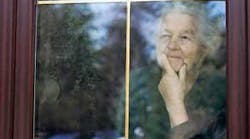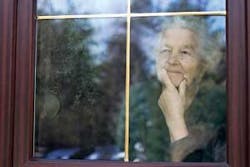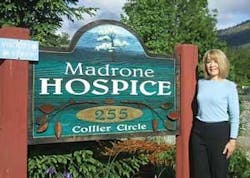Do you have four hours a week? Hospice volunteering is a natural extension of our professional volunteer concepts.
by Valerie Chambers, RDH, BS
From the beginning of our educational experience, we are encouraged to volunteer our dental hygiene services for those in need. We reach out to others with compassion, understanding, and diligence. Dental hygienists have the natural ability to empathize, counsel, and make things better for all we serve. We're in an endless pursuit to continue our education and open the door to new concepts.
The purpose of this article is to introduce a most rewarding opportunity for our volunteer capacity. I have personally been fortunate to have been a volunteer at my local hospice organization for the past year, and I've become acquainted with the ideas hospice has embraced through many decades.
The hospice concept dates back to 500 A.D. Communities worked together when an individual was sick, had an injury, or was dying. In Europe, during the 6th and 7th centuries, monasteries took in the sick and disabled, and wealthy women and widows became the first nurses. During the Crusades, 1095 to the end of the 17th century, monasteries and nunneries became houses of refuge for those in ill health, and many spent their last days cared for by monks and nuns. The word "hospice" is derived from the Latin word "hospes," meaning to host a guest or stranger.
Hospitals evolved as medical treatment developed. These were often referred to as "houses of death," as patients often died due to acquired diseases because the germ theory was not known. Families preferred to keep their loved ones at home, fearing they would not leave the hospital alive. Neighbors often helped the family with necessities such as food and clothing.
In 1842, Mme. Jeanne Garnier of Lyon, France, founded the Dames de Calaire, the first organization to assist in hospice care. The concept spread to Ireland, and in 1879, Our Lady's Hospice of Dublin was introduced by the Irish Sisters of Charity. In 1905, St. Joseph's Hospice in Hackney, London, was founded.
In 1967, Dame Cicely Saunders, a young doctor with training as a nurse and medical social worker, was inspired by a patient she had met in 1948. The patient was admitted to the hospital with inoperable cancer. The two discussed how she might one day open a facility that was better suited to treat patients with terminal illnesses. Saunders pioneered the use of opiate analgesics "around the clock" to maximize pain control. Before the patient died, he told Saunders he wanted to be "the window in her home," and he bequeathed her the funds to found the modern hospice movement.
A book published in 1969 by Dr. Elizabeth Kubler-Ross titled "On Death and Dying" includes 500 interviews with dying patients. Kubler-Ross argues that home-care is preferable to institutional care, and patients should have the right to participate in deciding their own treatment.
Today hospice is no longer a place, but a philosophy of care for patients with a life-limiting illness and their families facing the most challenging transition. Providing patients a place to rest, to be cared for, and to gather courage to face the remaining days of their journey are the primary quest and purpose of hospice.
Several hundred thousand volunteers work in hospices throughout the United States and are an essential aspect of the hospice philosophy. Such volunteers are part of the interdisciplinary team working to deinstitutionalize the dying experience. Hospice volunteers recognize that "dying is not just a medical event, but a personal one as well."
There are many aspects of hospice care and needs, and the opportunities are many. These include transporting patients to appointments, grocery shopping, visiting with patients, providing respite care for caregivers, child care assistance, and working in local hospice shops or adult day care centers. Volunteers can assist with local fundraising and administrative work, assist with support groups, or become involved with pet therapy.
Volunteering for hospice gives us a chance to grow in immeasurable ways. Connecting with hospice patients and their families is a rich experience. Expanding our horizons is a constant as we continue to seek guidance and awareness of others through the richness of life experiences. Personally, I've shared conversations with the terminally ill which will be guideposts I'll treasure as I continue my walk, and I'm certain this will enhance my connection with my patients professionally as well as in my volunteer capacity.
Four thousand baby boomers turn 60 every day. Alzheimer's is diagnosed every 71 seconds. Hospice is constantly seeking volunteers to serve patients and families. This need will certainly be magnified in the coming years, and I'm convinced we will all be touched by hospice sometime during our lives.
The following is a story borrowed from the Amitabha Hospice Service in Australia which illustrates their philosophy of care:
"Good evening, friend, what are you doing?"
"I'm throwing these starfish back in the ocean. If I don't, they'll die up here."
"There must be thousands of starfish on this beach. You can't possibly get to them all. You can't possibly make a difference."
She smiles, picks up yet another starfish, and throws it into the ocean. "I made a difference to that one."
To seek hospice information in your area, check www.hospicefoundation.org.
About the Author
Valerie Chambers, RDH, BS, has been practicing dental hygiene in private practices for 35 years. She completed her bachelor of science degree through the online program at Oregon Institute of Technology, Klamath Falls, Oregon.








